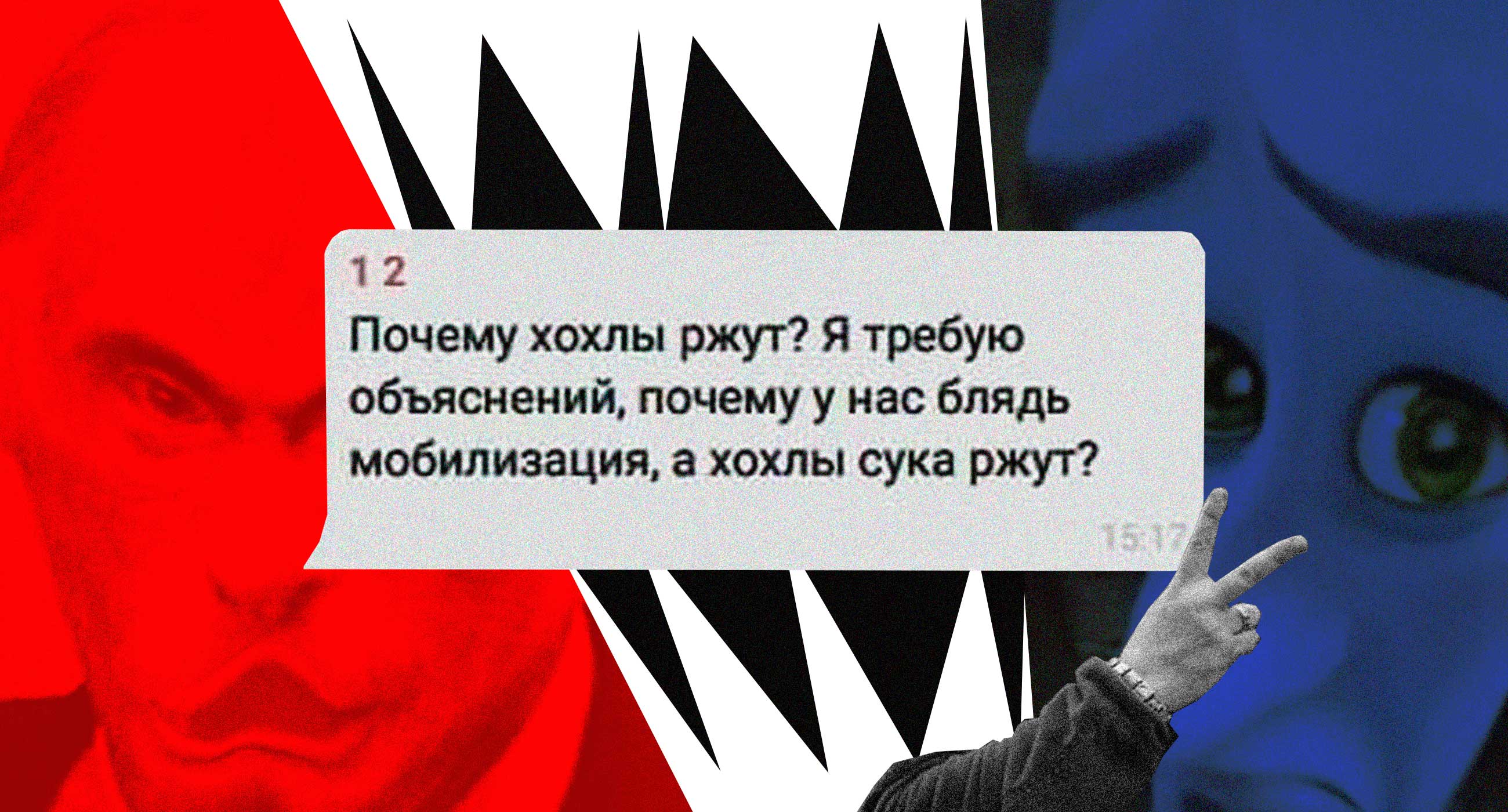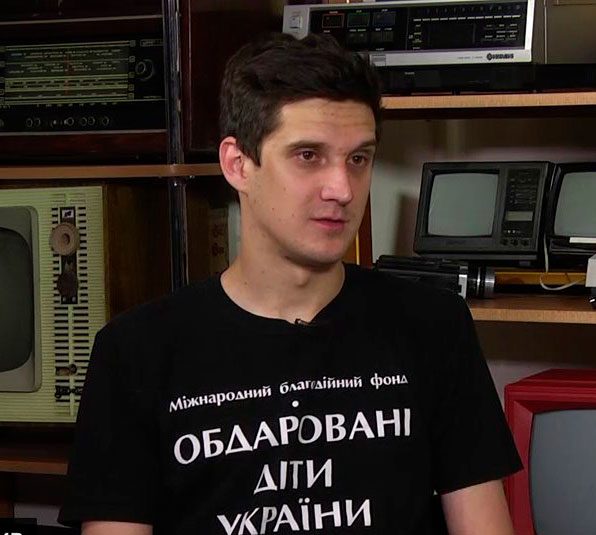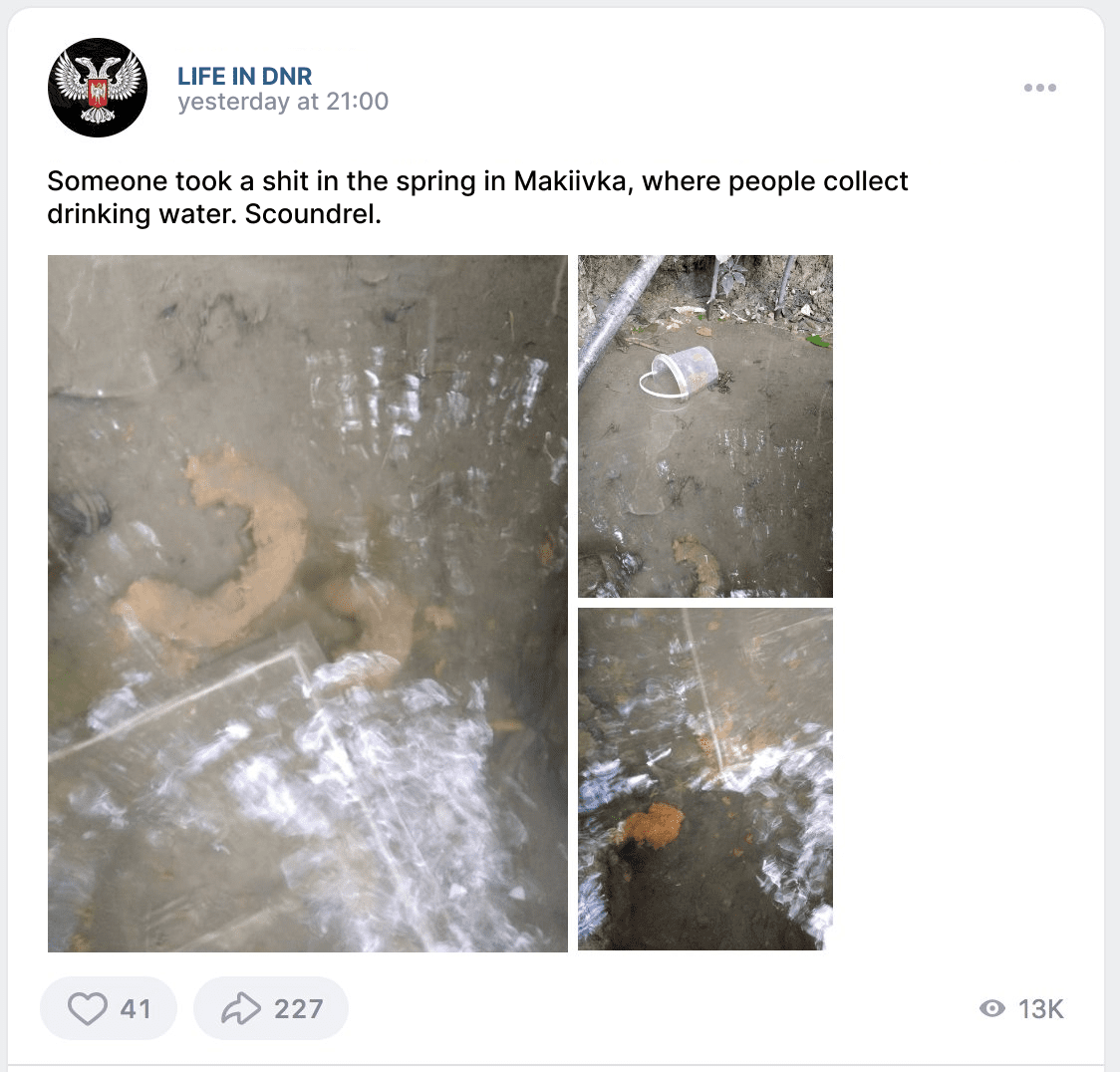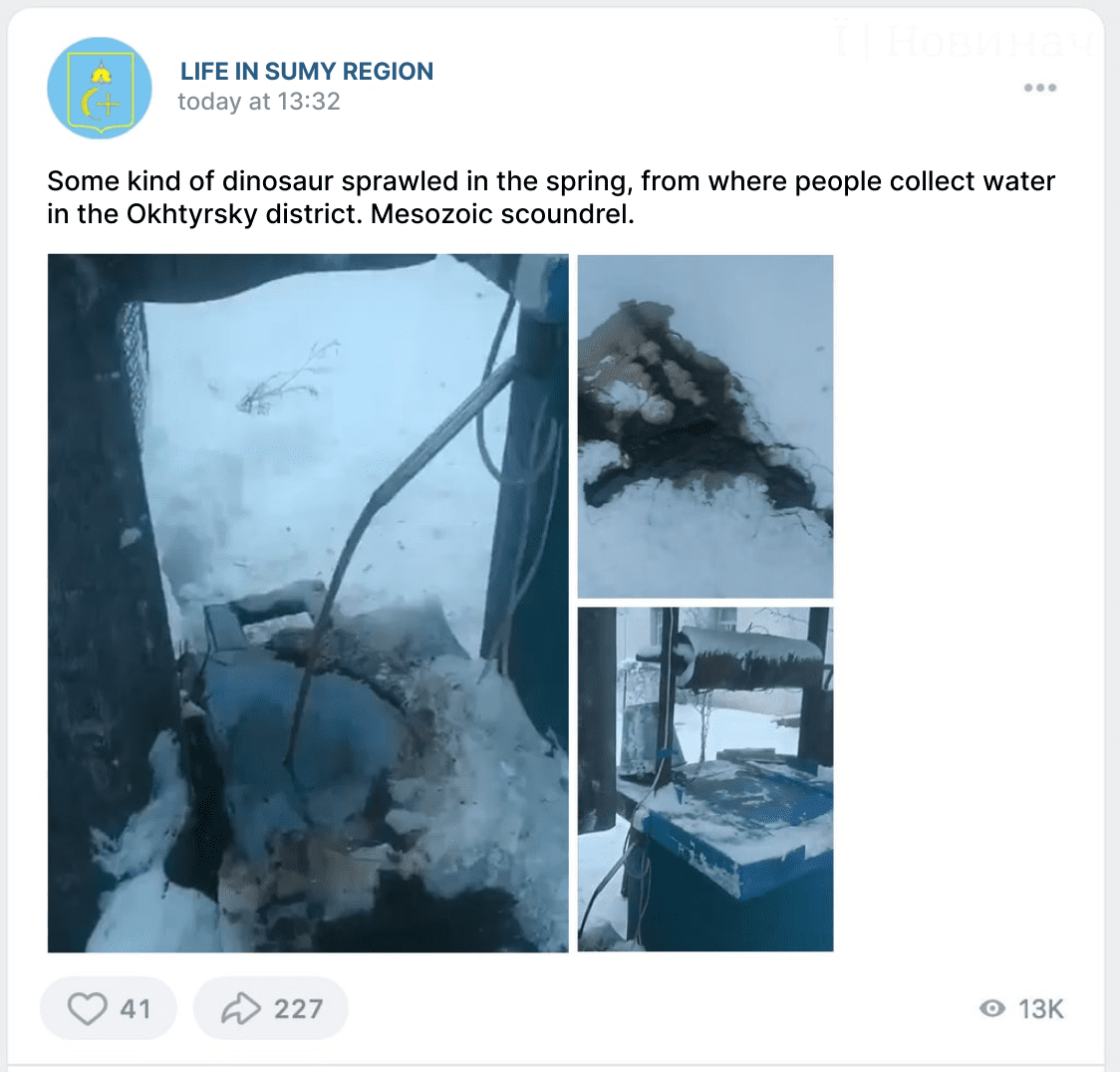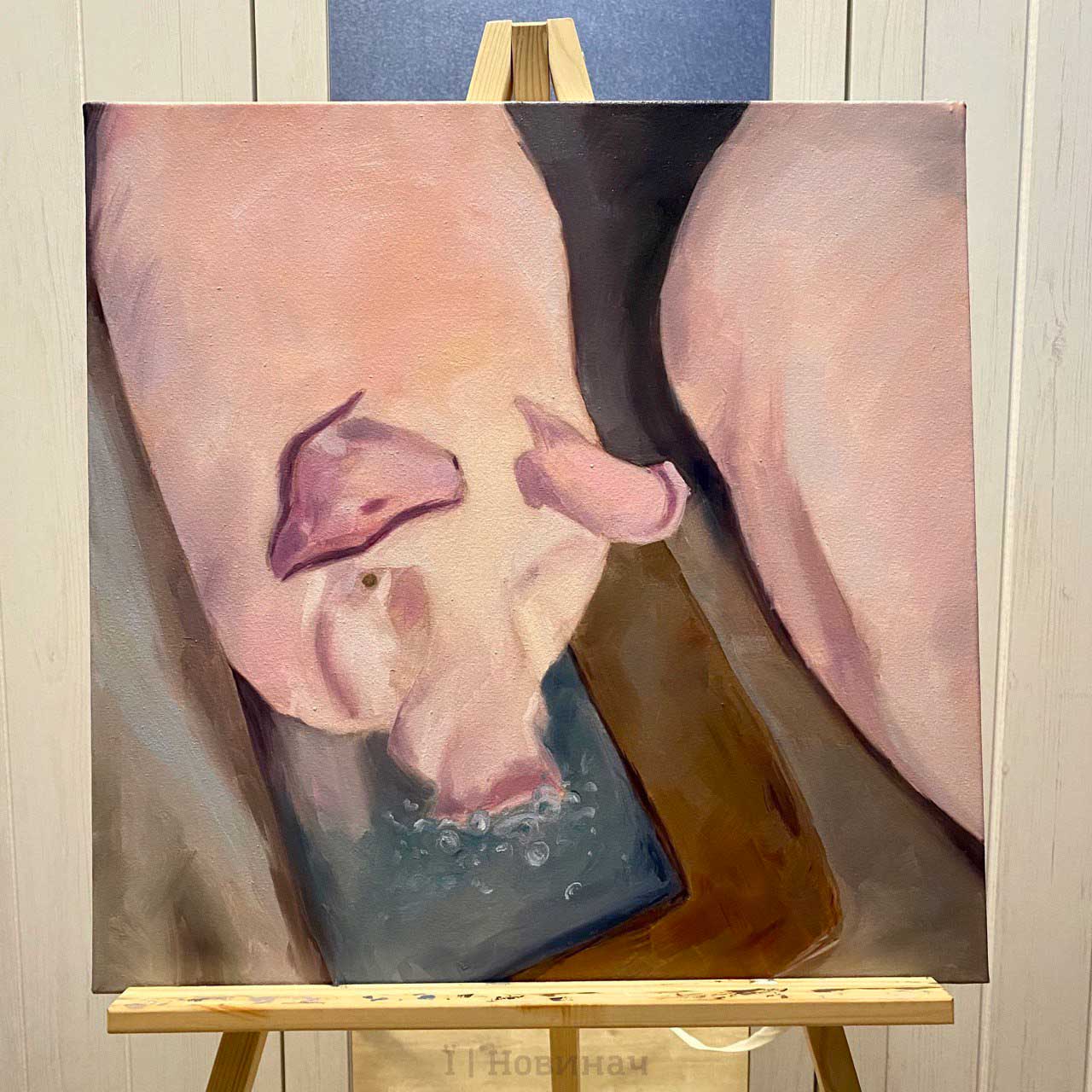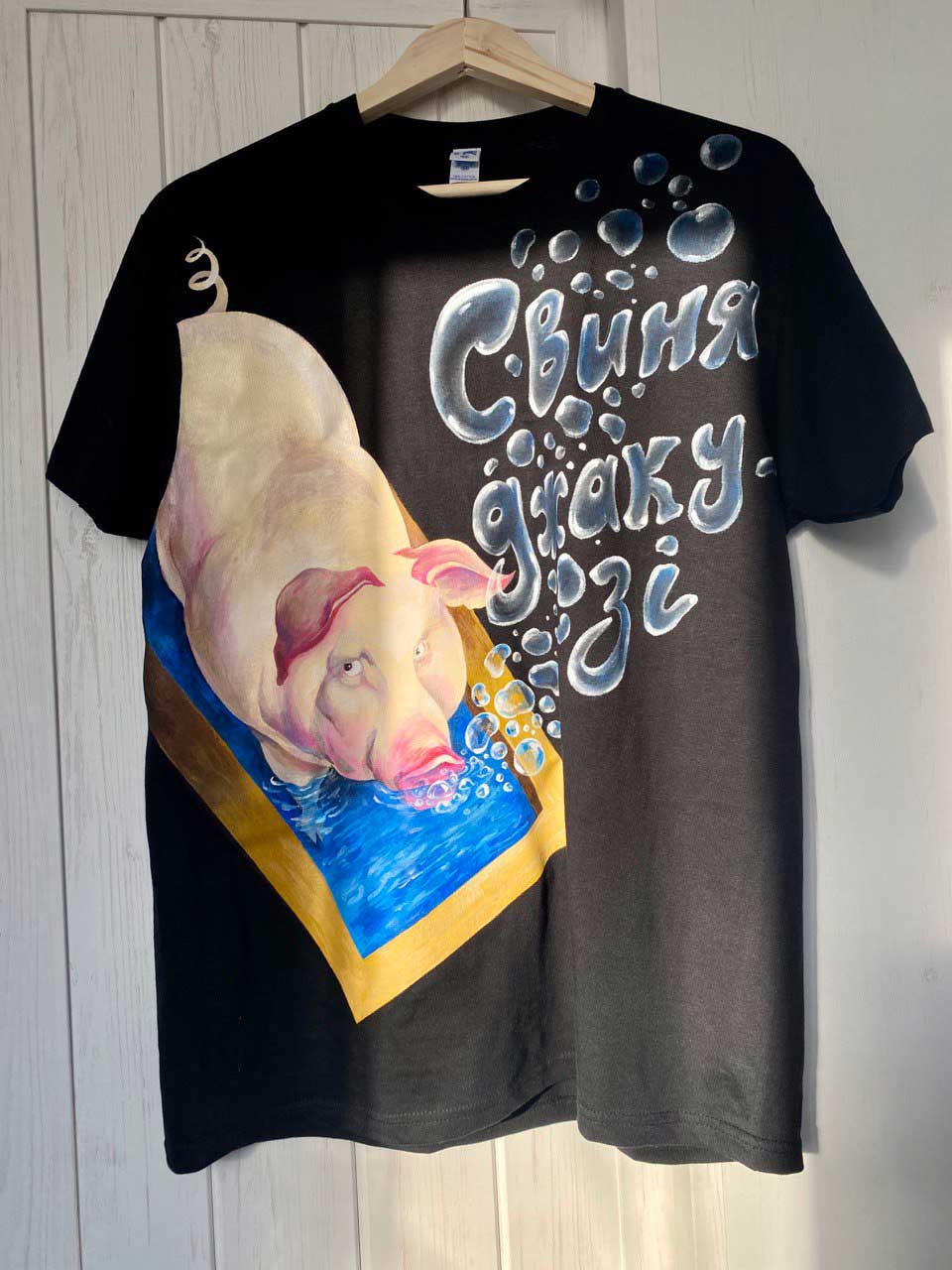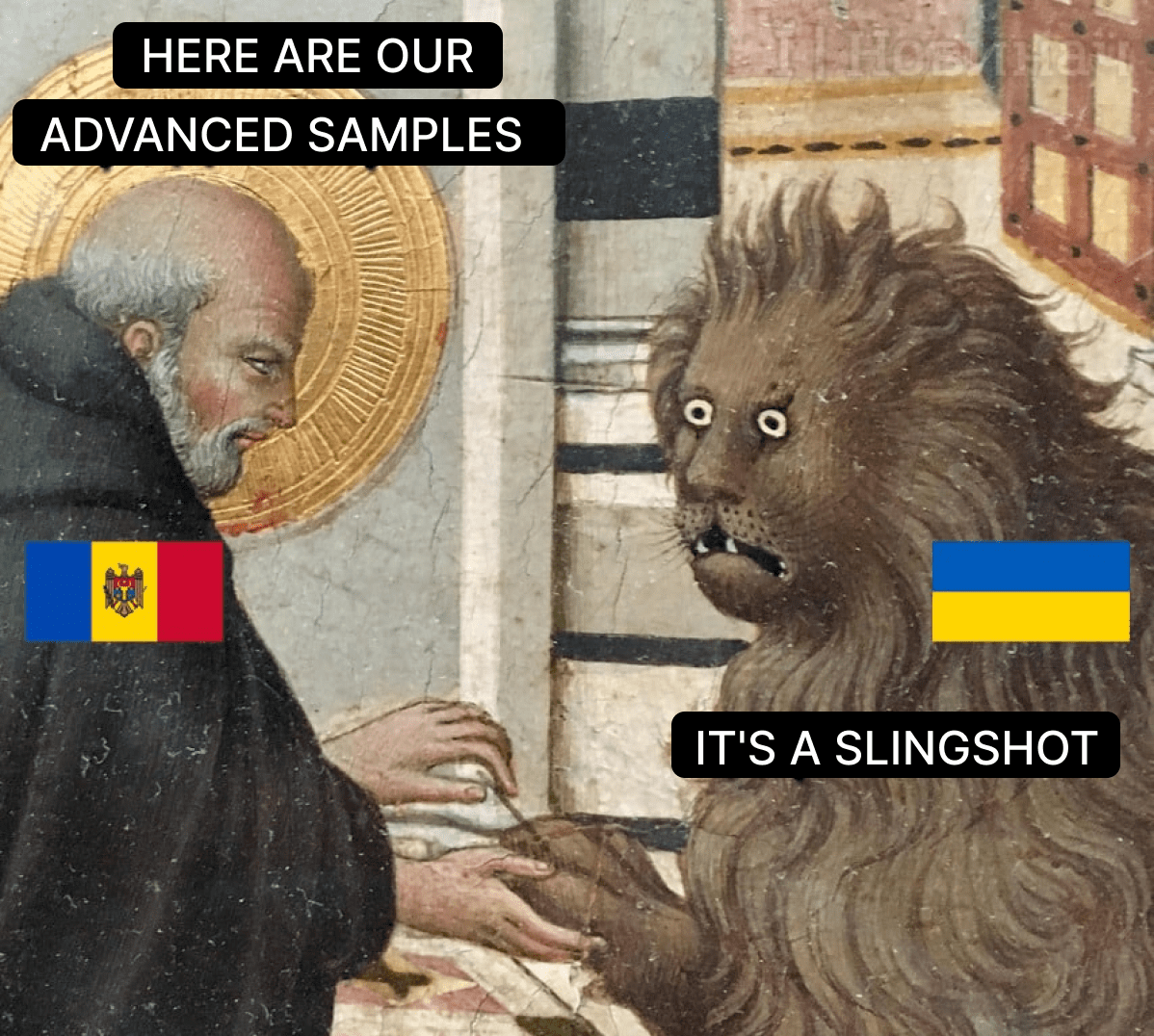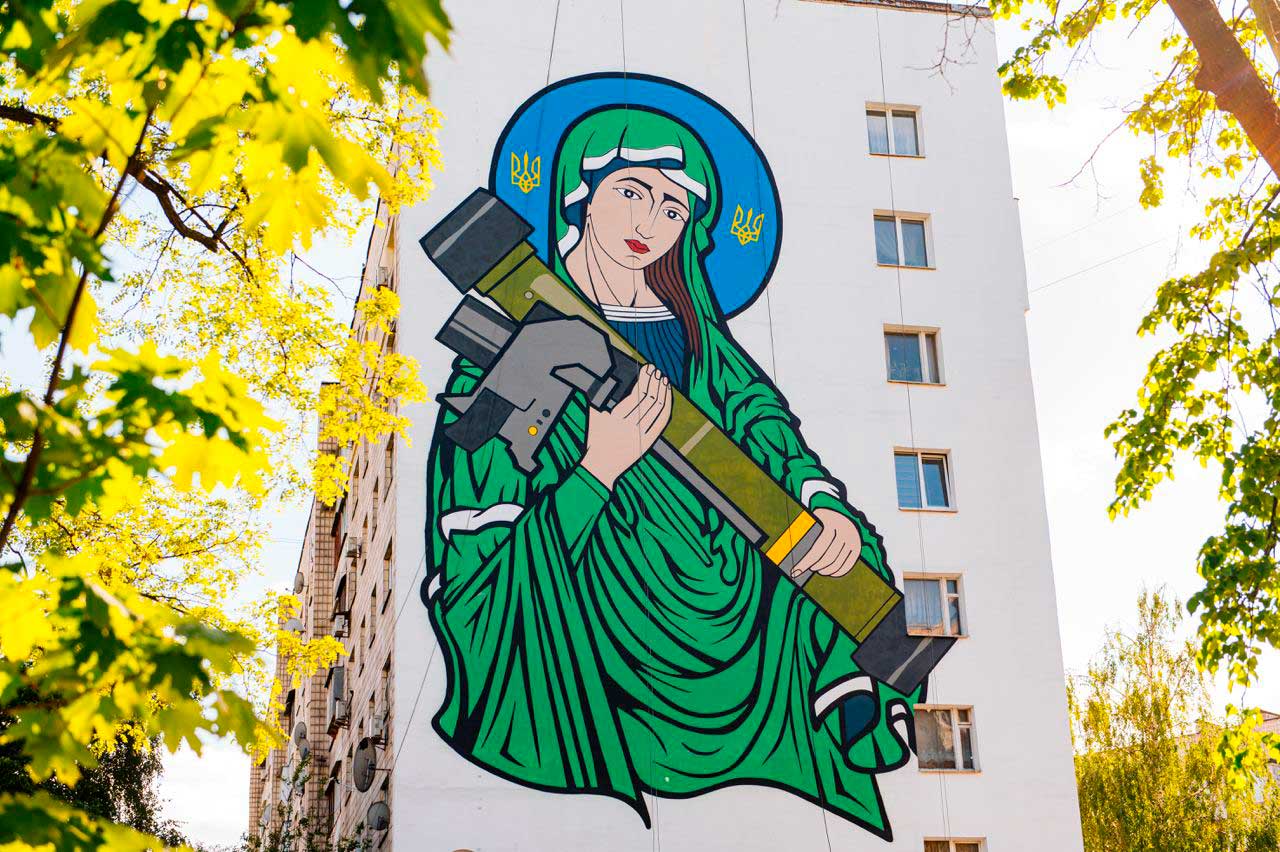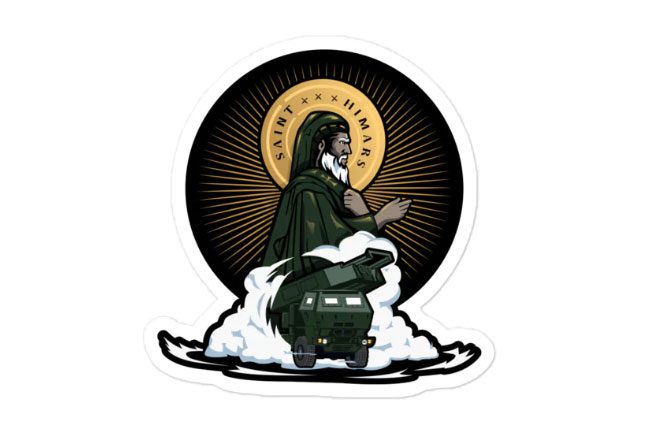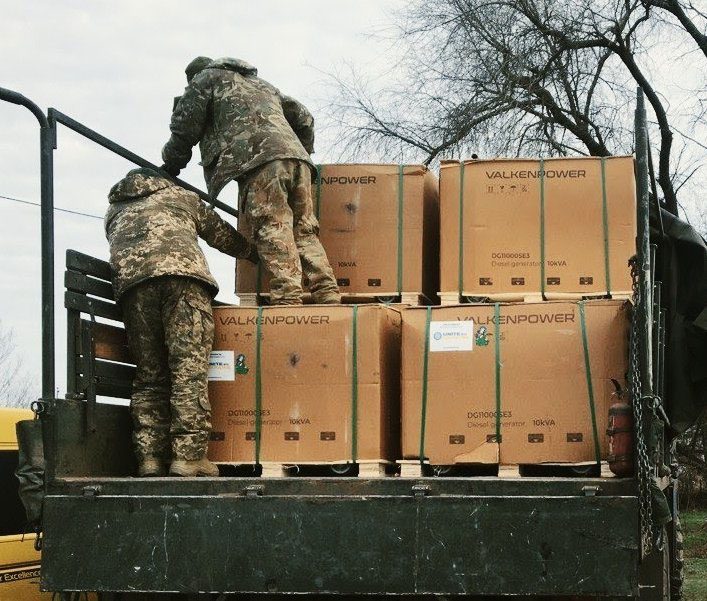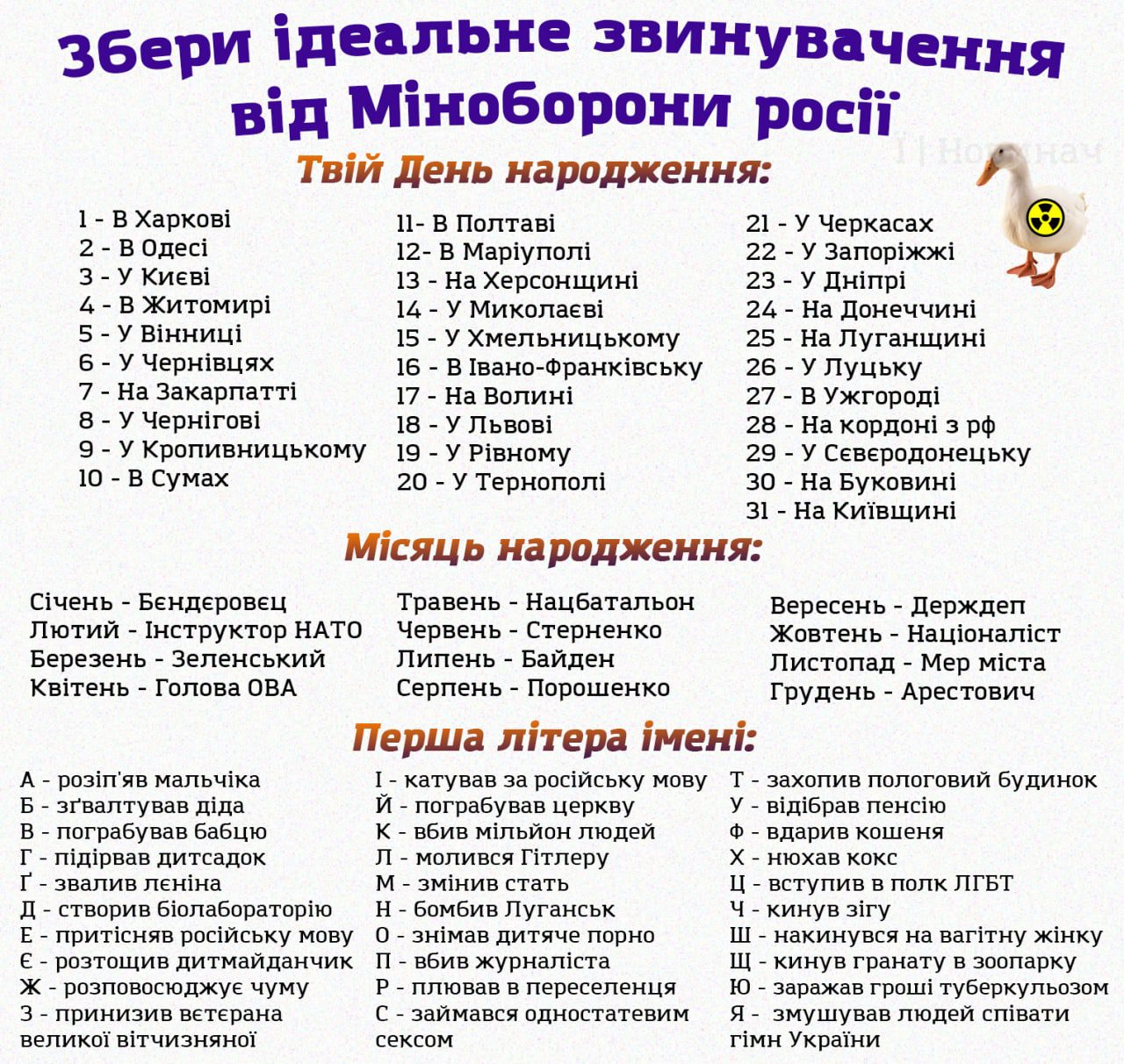Hundreds of thousands of memes have appeared during the war in Ukraine. From a means of psychological support, they have turned into something more: a tool to raise funds to support the Armed Forces, and an element of the information war (which Russia is losing). Zaborona talked to the authors of Novynach and Saint Javelin, who make memes for Ukrainian and foreign audiences respectively, about how to turn a video with Russian tanks into an episode of an animal documentary, why a Ukrainian meme smashes every enemy PSYOP, and how Ukrainian soldiers dance the Wednesday Addams dance.
Who creates some of Ukraine’s best war memes?
Most Ukrainian meme creators post them on Telegram or Twitter, from where they spread to other public. Zaborona talked to Ihor Kharkin, a creator from Zhytomyr, Ukraine, who works for the Novynach Telegram channel, about creating memes for the Ukrainian audience.
-

Igor Kharkin. Photo: Suspilne Zhytomyr
“There are thousands of channels that repost the same news from each other. We stand out — we create jokes for each piece of news. Until February 24, virtually all news except those that cannot be joked about were published with memes. When the war broke out, there were fewer reasons to joke, so there were fewer memes with the news. But there is still something to joke about,” he explains.
Novynach is not the only project of Igor. He is also the author of the Regionality telegram channel, which publishes funny news from the regions, and a volunteer of SUVIATO, a union of war participants, disabled and war veterans, founded in 2014.
“The Novynach team helps with fundraising for SUVIATO. We receive many requests for help from other organizations, but we refuse almost all of them because we cooperate with people we know personally and with whom we are confident. Although we are not a fund of Prytula or Chmut, we are also effective. Since February 24, we have raised over ₴11 million,” explains Kharkin.
Meme means writing a script and rewriting it thousands of times
Today, a team of ordinary students stands behind Novynach. “My university team used to qualify for the League of Laughter. Zelensky said: “We invite funny companies”. So we are just a funny company,” Igor jokes.
Now there are three people in Novynach, but the team has already recruited a new meme creator who will soon increase the editorial staff. Kharkin emphasizes that to become such a specialist, it is important to be able to joke about the traditional conventions of the news genre. A meme creator is not just a person who can make a meme or draw something.
“A meme creator finds the news, goes to the source, checks it for oldness, chooses the essence, writes a headline and a lead. He obviously writes it badly — it is corrected a thousand times by colleagues. Then they prepare jokes for the lead, which he or she created [usually two creators work on a shift], and sketch 5-6 variants of memes for the news. And then we choose the one we think is the funniest, create a meme, illustrate it and upload it to the channel. It never happens that one person searches for news, another writes the caption, and the third checks it. All this is done by one meme creator,” Igor emphasizes.
Ukrainian Armed Forces dance in the style of Wednesday Addams — everything you need to know about Ukrainians
Kharkin says that it is difficult for him to single out a specific meme of Novynar because it is a genre that lives for a week at most. Among the latest high-profile memes, Igor singles out “Makeyevsky Rodnichok” (Makiivka spring) — the network jokes that it was a special operation conducted by Kirill Budanov.

Meme: Novinach
“This is a great thing that gave birth to many different pictures and even merch. Recently, we also used this joke in the context of the news that oil leaked from a well in a village in the Sumy region. A good meme is one that can be used many times,” explains Kharkin.

Meme: Novinach
One of the latest memes that has gained great popularity is an image with a pig in a jacuzzi, blowing bubbles and looking up. Igor says that everyone liked this pig very much. One of the followers even painted it in oil, and Novynach sold it for half a million to help the Armed Forces. Later, a subscriber sent the team a T-shirt with a pig, which was also sold for the needs of the Armed Forces. In total, by exploiting the pig in the jacuzzi, Novynach raised ₴1 million — these funds have already been transferred to Ukraine’s Army.
-

Photo: Novynach -

Photo: Novynach
“Ukrainians are very postironic and know how to laugh at themselves. No matter what the Russians say about us, no matter what porky topic they bring up, we use everything for laughter. And how cool it is that any PSYOP, any of their attempts turns around and we just laugh at it. It’s very cool and says a lot about them and us. Especially when you watch their so-called Z-channels, where everything is devoid of any irony,” says Igor.
Kharkin emphasizes that only the Ukrainian army can dance the Wednesday Addams dance for TikTok on the front line. Ukrainians and memes, according to Kharkin, are a movement of invincibility, and it is impossible to imagine this war without memes. Because as soon as something falls, explodes, and breaks in Russia, thousands of memes immediately appear.

Meme: Novinach
“I remember we made a meme about a news story where Lithuanians gave us three marine drones and named them PEACE Дец (consonant with ‘get fucked’), PEACE Дюк (consonant with ‘pussy’), and PEACE Да (consonant with ‘cunt’). We made a meme that in 2030, schoolchildren will die of laughter at a history lesson,” Igor laughs.
Memes are self-censorship
Ihor recalls the meme of Novynach, for which he felt unpleasant. It was the news that a rocket fragment fell on the territory of Moldova because of Ukrainian air defense. The team created a meme from this news, which they remade from a joke about salary.
“Moldova said that together with Ukraine it will develop the air defense system. We came up with a meme where a priest gives a lion cub a branch. We drew it as if Moldova was giving Ukraine a branch and saying it was air defense. The lion cub says ‘but it is a branch’. The joke is cool, but unsuccessful because you shouldn’t laugh at the countries that help us,” emphasizes Kharkin.

Meme: Novinach
During the war, all jokes are carefully checked, edited, and self-censored as to what can and cannot be joked about. Kharkin says that on days when particularly tragic events happen, the channel does not publish memes at all. “We will never post a meme after news of victims or terrible destruction,” says Kharkin, “because if a person opens the channel later and sees news of victims and then a meme, it will look completely inappropriate.
Who is the main meme-maker and author of viral videos about the war in Ukraine?
Even before Russia’s full-scale invasion of Ukraine, Canadian journalist Christian Borys started a charity initiative called Saint Javelin. A Canadian of Ukrainian descent, Borys has lived in Ukraine for a long time, covering the events as a journalist for Vice and the BBC.
-

Christian Borys. Photo: Christian Borys / Facebook
Borys turned the image of the Virgin Mary with an anti-tank missile system into a viral meme and a tool to raise donations in support of Ukraine. Now Saint Javelin is a meme empire that has raised more than $2 million, given paraphernalia to the President of Ukraine, and is developing more than ten collections with different characters, including another saint — Saint HIMARS.
In a conversation with Zaborona, Borys admits that he did not create the logo of the organization. In 2017, the Madonna meme began with an image of the Virgin Mary with a Kalashnikov instead of a Javelin — it was drawn by American artist Chris Shaw. But in 2017, Ukraine needed a large batch of anti-tank systems — and the request was partially satisfied by then-US President Donald Trump. Then someone on the Internet replaced the Kalashnikov with the Javelin.
“I liked this meme, I had seen it before and just wanted to print some stickers so that people could stick them on their laptops, cars, whatever. We were planning to donate a small amount of money to help a Canadian charity that has been working in Ukraine since 1991,” says Christian, “and then the war started. I posted a meme with Madonna on Instagram and asked: “Does anyone want this?” It exploded overnight — Ukraine was the biggest story in the world at the time. People wanted to show support in such a simple way.”
A saint with a spear is normal. But not with “Javelin”
Christian admits that in the beginning, the organization had problems because of the use of the saint’s image. In late May, Saint Javelin opened its first major project in Kyiv — a mural with Saint Javelin in the Solomyansky district. Artist Andriy Palval painted the image on the facade of the building at 13 Aviakonstruktora Antonova Street. However, on May 26, the actual day the mural was created, the Kyiv Administration painted over a halo around the head of Saint Javelin because of criticism from the Council of Churches. Borys noticed that only the halo was painted over, but not the arms, which surprised him.
-

The “Saint Javelin” mural in Kyiv before the nimbus in the image was painted over. Photo: donttakefake.com
“I did not know the history of icons in war. But then the museum of the First World War in the United States wrote an article, thus defending us, and told how icons with weapons are used for moral support in the war. So they have an amazing article saying that this tradition is hundreds of years old. The only reason why it all seems offensive is that everyone is used to seeing saints holding a spear or a sword or some ancient weapon. And this is the first time you see a saint or religious figure holding a modern weapon,” says Christian.
According to the journalist, it is the differences in perception that made the image of St. Javelin so powerful.
Russian army in the animal world
Borys created his favorite meme himself. Christian wrote a scenario of Russian tanks entering Ukraine and ending their lives there — he came up with the plot when he was watching BBC Planet Earth and in one of the episodes a salmon swam downstream and then died after spawning (almost all salmon species spawn once in their lifetime and then die).
“We found a person to voice the whole thing like David Attenborough [one of the world’s most famous naturalist presenters]. I wrote the script as if it was an episode of Planet Earth, but about Russian tanks. People actually thought that Attenborough had narrated the episode and asked why he did it. We tweeted the meme and it went viral — 3 million views and 20 thousand retweets,” explains Christian.
Through monetized memes, the Saint Javelin team collects donations. The organization creates meme designs either about something famous or based on a geopolitical event that is about to happen. For example, the liberation of Kherson or the arrival of HIMARS in Ukraine. So, first, the team created Saint Himars, and then other designs with saints.
-

Saint HIMARS patch. Photo: Saint Javelin
Now Borys’ team is focused on creating news content, which in some sense also has the form of memes. Christian describes the process of meme creation as a joke on news culture, traditional journalism, and documentary filmmaking. Now Saint Javelin is trying to create more complex content that will gather more likes. For example, Saint Javelin made a four-minute animated video about HIMARS that looks like America’s Got Talent. Such videos can take up to two weeks to produce, but they have a big reach.
Humor as anti-fatigue from war
To date, the organization has donated $2 million — this includes both money donated and items purchased. For example, Saint Javelin has purchased $200 thousand worth of sleeping bags and winter jackets. At first, the team received many donations and then hired people to distribute the money. Now they are raising funds to support Ukraine’s military efforts: the money is donated to international charities such as 2402.org, Help Us Help, and Red Cross Ukraine. Saint Javelin also does charity work such as buying trucks, clothes and helping families affected by the war.
-

Helping the military with money raised from memes. Photo: Saint Javelin / Twitter
The initiative continues to develop and raise funds to support Ukraine. In the Saint Javelin online store, there are constant updates of charity souvenirs: T-shirts, hoodies, stickers, and much more. Every day people from all over the world order things on the site. Saint Javelin plans to establish production in Ukraine and create jobs for internally displaced persons, supporting the country’s economy.
By shooting videos, posting them on Telegram, and translating them into other languages, the organization shows what is really happening in Ukraine and attracts new people. Saint Javelin creates not only designs but also images and video memes that inspire people and encourage them to really care about what is happening.
“It’s not easy to watch this for so long. Honestly, I’m amazed every day how many people around the world still care,” says Borys.
-

Meme: Novynach

